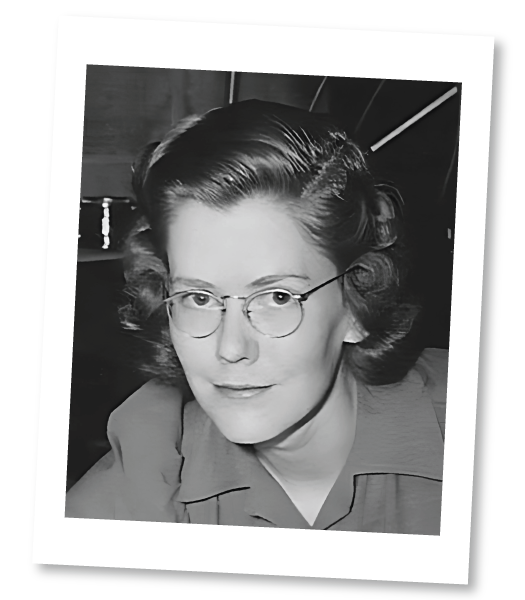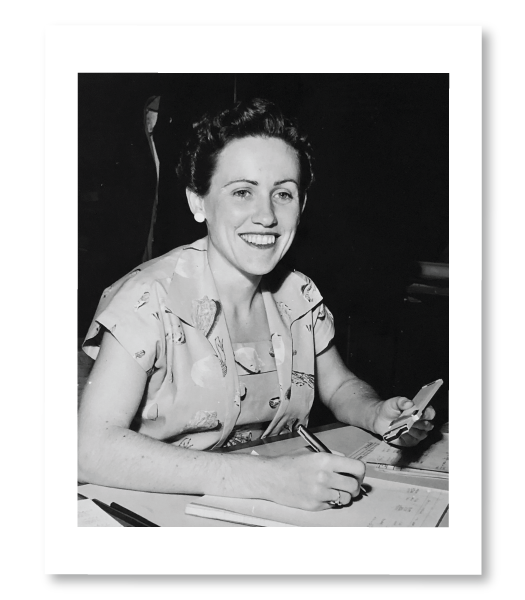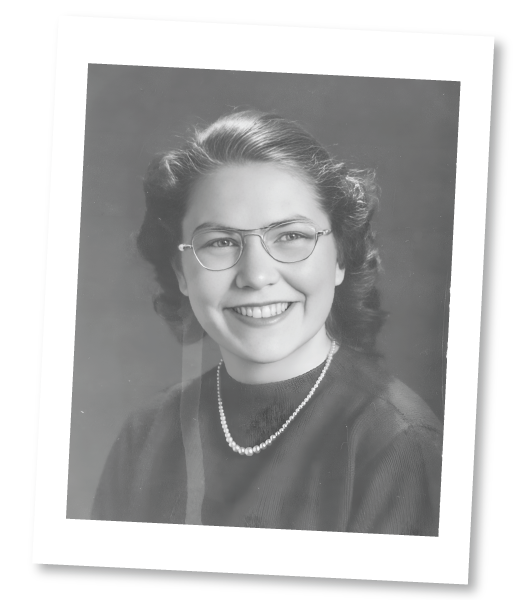Amy Sprague
September 18, 2024
Honoring Rose Lunn, Eleanor Dickson and Luella Armstrong: Pioneering UW engineers who shaped aerospace history.
Listen to this story:
In the mid-20th century, when aeronautical engineering was even more overwhelmingly male-dominated, three remarkable women from the University of Washington's aeronautical engineering department (now the William E. Boeing Department of Aeronautics & Astronautics) charted new courses in the field. Rose Lunn, Eleanor Dickson, and Luella Armstrong not only excelled in their studies and careers but also paved the way for future generations of female engineers. With the recent passing of Luella Armstrong in 2023, this is a fitting time to reflect on and honor the contributions of these pioneering women who helped shape the aerospace industry.
These trailblazers share remarkable commonalities. Each stood alone as the only woman in her graduating class. All three honed their skills at the University of Washington Aeronautical Laboratory (UWAL), where their work with wind tunnels laid the foundation for their groundbreaking careers.
The wind tunnels: A center of innovation
The UW's wind tunnel facilities played a crucial role in these women's education and early careers. The UW Aeronautical Laboratory, featuring a 3x3 wind tunnel built in 1917, and the Kirsten Wind Tunnel, constructed in 1936, were at the forefront of aeronautical research. Both facilities continue to operate today, playing a vital role in advancing academic and industry research.
Rose Lunn's expertise was crucial in the development of the X-15 rocket plane, pushing the boundaries of hypersonic flight.
Rose Lunn: The first to soar (Class of 1937)
March 6, 1916 - August 31, 1998

Rose Lunn
Rose Lunn made history as UW's first female aeronautical engineering student. From a young age, Lunn had set her sights on studying at the Massachusetts Institute of Technology. Her dream began to take shape when she enrolled in UW's Department of Aeronautical Engineering in 1933.
In 1937, Lunn graduated at the top of her class, becoming the University's first female aeronautical engineering graduate. Her academic excellence, honed through work in the original wind tunnel, earned her a scholarship to MIT, fulfilling her childhood ambition.
At MIT, Lunn completed a three-year-long MS degree in aeronautical engineering and became the first recipient of Zonta International's Amelia Earhart scholarship award - a $4,000 grant that allowed her to continue her doctoral studies.
Lunn's career took off during World War II, a critical period for aerospace advancements. She initially joined Curtiss-Wright in Buffalo, New York, where she set up a Flutter and Vibration Group. However, her most significant contributions came during her 22-year tenure at North American Aviation (NAA). At NAA, Lunn established another Flutter and Vibration Group and added a Vibration Laboratory for ground and flight testing, an acoustical group, and an analog computer facility.
Her work was crucial in the development of the X-15 rocket plane. When concerns arose about mounting the X-15 on the B-52's wing, Lunn, whose judgment was well-respected among colleagues, expressed reservations. Her expertise led to a detailed study to ascertain the full extent of engine vibration effects on the X-15, showcasing her indispensable role in aerospace innovation.
Eleanor Dickson's wind tunnel testing contributed to the development of winglets, revolutionizing the efficiency of large airliners.
Eleanor Griffin Dickson: Winds of change (Class of 1949)
October 25, 1926 - February 23, 2021

Eleanor Dickson
Eleanor Griffin Dickson's fascination with aviation began early. As a 10-year-old, she was already building model airplanes and dreaming of designing real ones. After graduating from Seattle's Queen Anne High School in 1945, Dickson enrolled in our department.
In 1949, Dickson embarked on a 38-year career at Boeing in Seattle. She became a pioneering "aerodynamicist," a term used for wind tunnel testing engineers - a role rarely held by women at the time. Her expertise in wind tunnel testing, developed during her time at the UW, contributed to significant advancements in aircraft design.
Dickson's work on "winglets" for large airliners improved fuel efficiency and performance. Her innovative use of local wind tunnels in aircraft design processes helped refine and optimize aircraft configurations. Throughout her career, she traveled to wind tunnels around the country to direct tests and gather data.
On being one of the first female engineers at Boeing, Dickson said she didn't notice; she just "did the job."
Luella Armstrong's innovative research and development on B-52 updates earned her Boeing's Medal of Recognition, extending the iconic aircraft's capabilities.
Luella Armstrong: Breaking the mold (Class of 1951)
September 10, 1929 - November 19, 2023

Luella Armstrong
Luella Armstrong continued the legacy of breaking barriers. Her exceptional work at the UW Aeronautical Laboratory so impressed Boeing engineers that she was guaranteed a position upon her graduation from the department in 1951.
Armstrong began her Boeing career in aircraft structural dynamics, working on complex projects including airplane landing loads and flutter analysis. Her initial focus was on payloads in the Air Tunnel, and she later discovered her work contributed to the Boeing B-50D airdrop of a nuclear weapon.
Reflective of the discriminatory practices of the time, Armstrong was dismissed due to pregnancy after working at Boeing from 1951 to 1956. During her 22-year hiatus from Boeing, she focused on raising her three children while also teaching herself computer coding skills.
When she returned to Boeing in 1979, Armstrong's self-taught knowledge of computers proved invaluable. She met with the head of Boeing's CAD/CAM division and quickly gained a reputation for being able to bridge the generational gap between younger and older employees at the company. This unique ability, combined with her engineering expertise, made her an asset in a rapidly evolving technological landscape.
Her contributions to the field were significant. Armstrong received the Boeing Medal of Recognition for outstanding research and development on B-52 updates, showcasing her continued excellence and adaptability in her field. In 2019, her pioneering spirit and career achievements were further honored with the prestigious Museum of Flight Pathfinder Award.
Throughout her career, Armstrong paved the way for women in engineering, serving as a role model and mentor for young women pursuing STEM education. In 2016, the Seattle Times corrected a 1951 front-page story about her graduation, originally titled "One Girl in Air Engineers Graduates with 174 men." The correction acknowledged Armstrong's statement: "I was a woman. I wasn't a girl." This correction highlighted the progress in recognizing women's contributions to engineering over the decades.
As the first female faculty member and now chair of this department, I stand on the shoulders of these women. Their groundbreaking achievements not only advanced aerospace engineering but also opened doors for countless women in STEM.”
Legacy of innovation
These three women - Lunn, Dickson, and Armstrong - not only excelled in their field but also opened doors for future generations of female engineers. Their work in and around UW's wind tunnel facilities helped shape the future of aerospace engineering. Their stories of perseverance, innovation, and excellence continue to inspire and shape the landscape of aerospace engineering, reminding us of the crucial role women have played in advancing the field, often in the face of significant obstacles.
A&A Chair Kristi Morgansen says, "As the first female faculty member and now chair of this department, I stand on the shoulders of these women. Their groundbreaking achievements not only advanced aerospace engineering but also opened doors for countless women in STEM. We're still working on what they started – making engineering a field where women aren't the exception, but the norm."